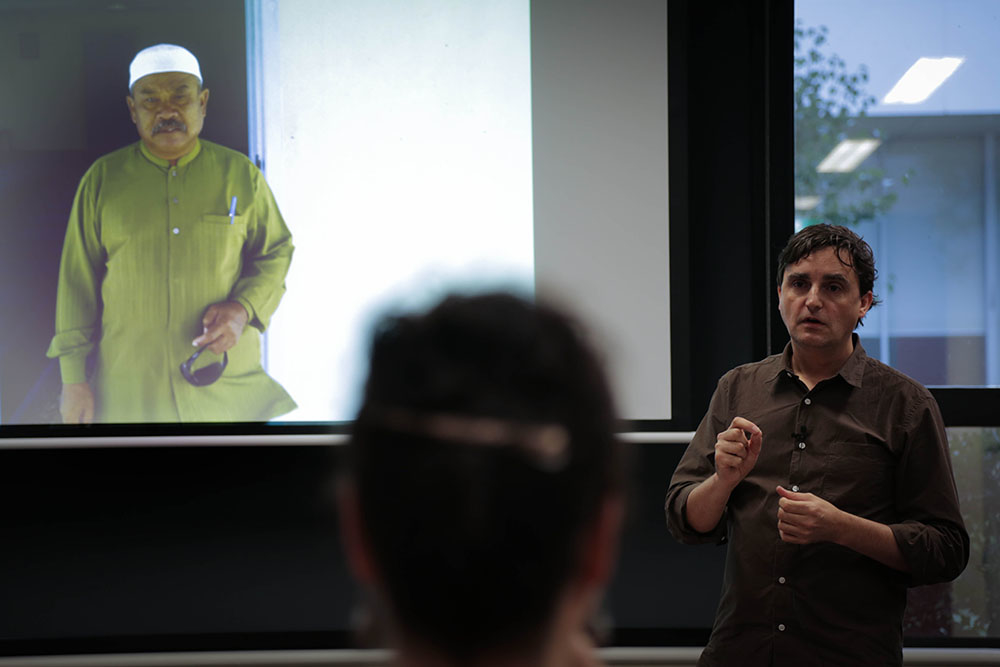Writer, curator and poet John Mateer discusses his recent art/historical project The Quiet Slave: a history in eight episodes in the context of his on-going interest in the nexus between scriptural traditions and migrations, voluntary and forced, in the Indian Ocean region.
Developed over the course of two years for the Perth-based visual arts biennale Spaced2, The Quiet Slaveis an historically accurate fiction set in the Indian Ocean in the early 19th Century, describing the first years of settlement on the Cocos-Keeling Islands, an atoll between Perth and Sri Lanka, through the eyes of a female Malay slave belonging to the controversial Englishman Alexander Hare. While it is intended to uncover the origins of the Malay community of the Cocos-Keeling Islands, aiming to restore a sense of their place in the history of the South-East Asian slave-trade and the British Empire, it has its origins in Mateer’s research into the place of Islam in the region.
The Quiet Slave: an history in eight episodes presented as a book in its original English and in Malay translation, a re-inscription of part of the text in the Arabic-Malay script known as Jawi, and an audio-piece dramatising, in the younger voices of the Cocos-Malay community of Katanning, the crisis which led to the Malay slaves being abandoned by Alexander Hare on the islands nearly two centuries ago. It is currently in show as part of the Perth International Art Festival’s exhibition Spaced2 at the Western Australian Museum. The Quite Slave is a project that can reminds us that language, as much in the fading material of its script as in its quiet narrative, is the basis of history and community.
Bio: John Mateer is a poet, writer and curator. His work includes essays, books of poems and Semar’s Cave, a prose travelogue on Indonesia. For two decades he has published criticism on contemporary art. He was on the steering committee The South Project, a Melbourne-based venture which developed cultural links across the Southern Hemisphere. In 2005 he was a fellow at the Iowa International Writing Program, supported by the Chicago Humanities Festival, and 2012 he was the Australia Council’s inaugural art writer-in-residence at ACME, London. He convened the 2013 symposium The Ambiguity of our Geography at Perth Institute of Contemporary Arts, as part In Confidence: Reorientations in Recent Art, the Indian Ocean-focused exhibition he curated for that institution.Among his books are Southern Barbarians, Emptiness: Asian Poems 1998-2012 and Unbelievers, or ‘The Moor’. His most recent volume is Namban, the Portuguese-language translation of Southern Barbarians. Currently he is researching traces of the explorer William Dampier’s voyages in Robinson Crusoe and Gulliver’s Travels.
Audio
Date Recorded: 17 Apr 2015Duration: 1:01:09 (total)
Part 1
Part 2


